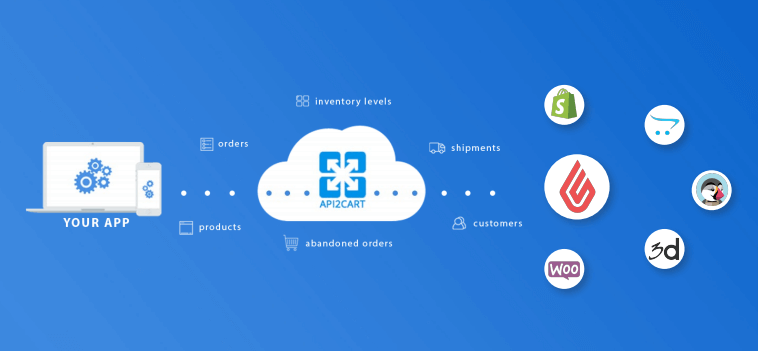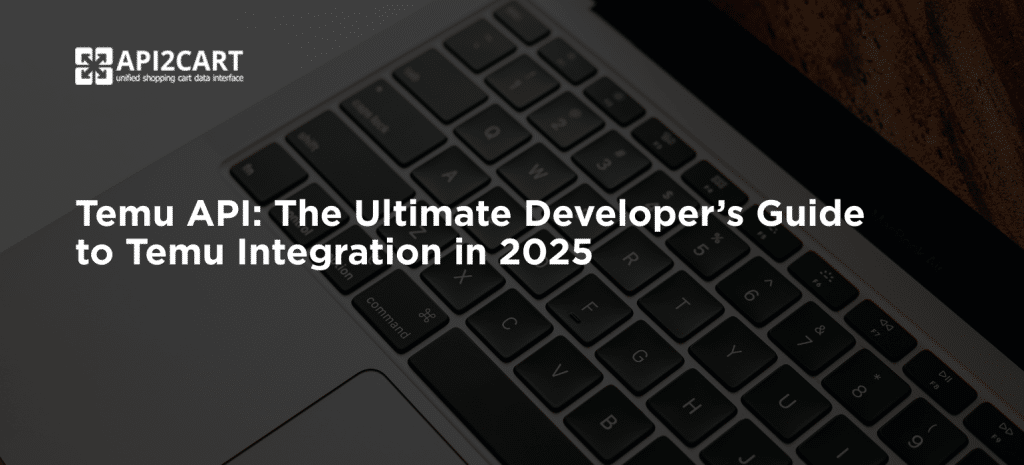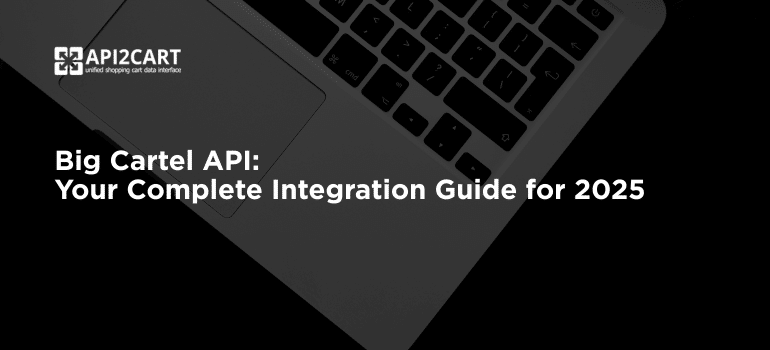
Introduction
The eCommerce market is evolving fast, and SaaS vendors who want to stay competitive need reliable integrations with major platforms. Developing a Lightspeed API connection — including the Lightspeed eCommerce API and Lightspeed POS API — is essential for any software provider serving online retailers. By building this integration, you can access store data, automate operations, and expand your product’s capabilities.This guide explains how the Lightspeed API documentation and Lightspeed API docs help developers understand the platform’s endpoints, authentication process, and best practices. You’ll also learn how to simplify Lightspeed integration with API2Cart’s unified API.
What Is Lightspeed eCommerce?
Lightspeed is a cloud-based, all-in-one retail platform that combines POS, eCommerce, and analytics tools into a single solution. It helps merchants manage inventory, orders, and customers while selling across multiple channels.
With more than 80,000 online stores powered worldwide, Lightspeed has strong adoption in the Netherlands, the US, Belgium, Canada, and Germany. This makes Lightspeed integration an excellent opportunity for SaaS providers to expand their reach and attract new clients in global markets.
About Lightspeed API
The Lightspeed eCommerce API allows developers to connect their software with Lightspeed stores and access key data like products, orders, customers, and stock information. It follows the RESTful architecture, which makes it easy to send and receive data through standard HTTP methods such as GET, POST, PUT, and DELETE.
This API supports JSON and XML formats and provides endpoints for essential eCommerce operations like product management, order synchronization, and shipment updates. Developers can explore all available endpoints and examples in the official Lightspeed API developer guide.
Lightspeed also uses OAuth 2.0 for secure authentication, ensuring that all data exchanged between your application and Lightspeed stores remains protected.
Benefits of Lightspeed API Integration for SaaS Providers
1. Access a fast-growing market
Lightspeed is expanding globally and ranks among the top eCommerce platforms in Europe and North America. Integrating with it allows your SaaS to reach thousands of online merchants using the Lightspeed ecosystem.
2. Automate data flow between systems
Through the Lightspeed API, your software can automatically retrieve and sync order, product, and inventory data. This reduces manual work and ensures smooth data exchange between Lightspeed and your app.
3. Offer more value to your clients
Merchants expect real-time updates, automation, and accuracy. Integration with Lightspeed helps your SaaS provide advanced features such as dynamic inventory control, order management, and multi-store analytics.
4. Gain a competitive advantage
While many SaaS solutions already support Shopify or WooCommerce, Lightspeed integration gives you an edge by expanding your platform coverage and helping attract clients who use this growing POS and eCommerce solution.
Common Challenges of Lightspeed API Integration
Building a custom connection with Lightspeed can be complex. Developers often face the following issues:
- Understanding API logic and data structure takes time and deep technical knowledge.
- Maintenance is continuous because Lightspeed updates its API regularly.
- Authentication through OAuth 2.0 can be confusing without proper setup.
- Error handling must be implemented carefully to manage rate limits and request failures.
These challenges can slow down development and increase costs, especially if you plan to connect your SaaS with several eCommerce platforms simultaneously.
How API2Cart Simplifies Lightspeed Integration
Instead of building a separate integration from scratch, you can use API2Cart — a unified shopping cart and marketplace integration solution. With API2Cart, your SaaS can connect to Lightspeed API and 60+ other platforms like Shopify, WooCommerce, and Magento through a single integration.
API2Cart manages all API version updates, authentication, and maintenance tasks for you. This eliminates manual work and ensures a stable and secure connection to Lightspeed and other major eCommerce systems.

API2Cart provides over 100 API methods to manage products, orders, shipments, and customers across all supported platforms. You can explore these methods in the API2Cart API Docs.
As outlined in the Lightspeed API documentation, the order.add.method enables developers to create new orders and manage order data directly through their applications. According to the official Lightspeed API docs, this endpoint is essential for syncing order details between your system and Lightspeed stores. The example below shows how it works in practice:
{
"customer_email": "[email protected]",
"customer_first_name": "John",
"customer_last_name": "Smith",
"customer_phone": "88008547457",
"order_payment_method": "PayPal",
"bill_first_name": "Adam",
"bill_last_name": "Smith",
"bill_address_1": "Green str. 35",
"bill_address_2": "Red str, 2",
"bill_city": "Chicago",
"bill_postcode": "12345",
"bill_state": "IL",
"bill_country": "US",
"bill_company": "Apple",
"bill_phone": "8 800 5659 6896",
"bill_fax": "545 45878",
"shipp_first_name": "John",
"shipp_last_name": "Smith",
"shipp_address_1": "Green str. 35",
"shipp_address_2": "Green str. 35",
"shipp_city": "Chicago",
"shipp_postcode": "24545",
"shipp_state": "IL",
"shipp_country": "US",
"shipp_company": "Apple",
"shipp_phone": "880086544564",
"shipp_fax": "556868",
"shipping_price": 0,
"shipping_tax": 5.5,
"order_shipping_method": "UPS Ground",
"comment": "This coole order",
"admin_comment": "Test admin comment",
"send_notifications": false,
"order_item": [
{
"order_item_id": "125, where {x} - 1,2,3,... etc",
"order_item_price": "1.32, where {x} - 1,2,3,... etc",
"order_item_quantity": "5, where {x} - 1,2,3,... etc",
"order_item_variant_id": "52",
"order_item_tax": 0,
"order_item_option": [
{
"order_item_option_name": "Color",
"order_item_option_value": "green",
"order_item_option_price": 2.3
}
]
}
]
}
Conclusion
Integrating your SaaS with the Lightspeed eCommerce API unlocks new growth opportunities and improves your competitive position. However, custom integration can be time-consuming and costly. With API2Cart, you can connect to Lightspeed and 60+ other platforms at once, simplify your development, and scale faster.
For more technical details, authentication steps, and supported endpoints, refer to the official Lightspeed API documentation. It provides developers with all necessary specifications to build stable and secure integrations.
Start your 14-day free trial today and see how easy it is to integrate your SaaS with Lightspeed POS API and other leading eCommerce platforms.
FAQs
- Rate limits that restrain the number of API requests made every minute and may slow down the synchronization of data;
- Complicated authentication, where Lightspeed is based on OAuth 2.0, which demands appropriate token management and refresh policies;
- Lack of completeness or consistency of documentation, thus making implementation and debugging more difficult;
- Data structure differences between Lightspeed Retail and eCommerce APIs, causing integration complexity.
- API version changes, which can disintegrate a working integration unless it is updated in time.
To simplify this process, effective, reliable and scalable SaaS tools, such as API2Cart, provide a unified API that connects software to Lightspeed and 60+ other eCommerce platforms and marketplaces, including Shopify, Magento, Etsy, Wix, WooCommerce, OpenCart, Shopee, TikTokShop, and other, at once, reducing the need for custom integrations and maintenance.
Additionally, API2Cart offers detailed API documentation and integration guides that include tech support for Lightspeed, helping software developers connect their software with Lightspeed and 60+ other eCommerce platforms and marketplaces, including Shopify, WooCommerce, Magento, OpenCart, Etsy, Wix, Shopee, Temu, TikTok Shop, and others, at once - all through a unified API.



